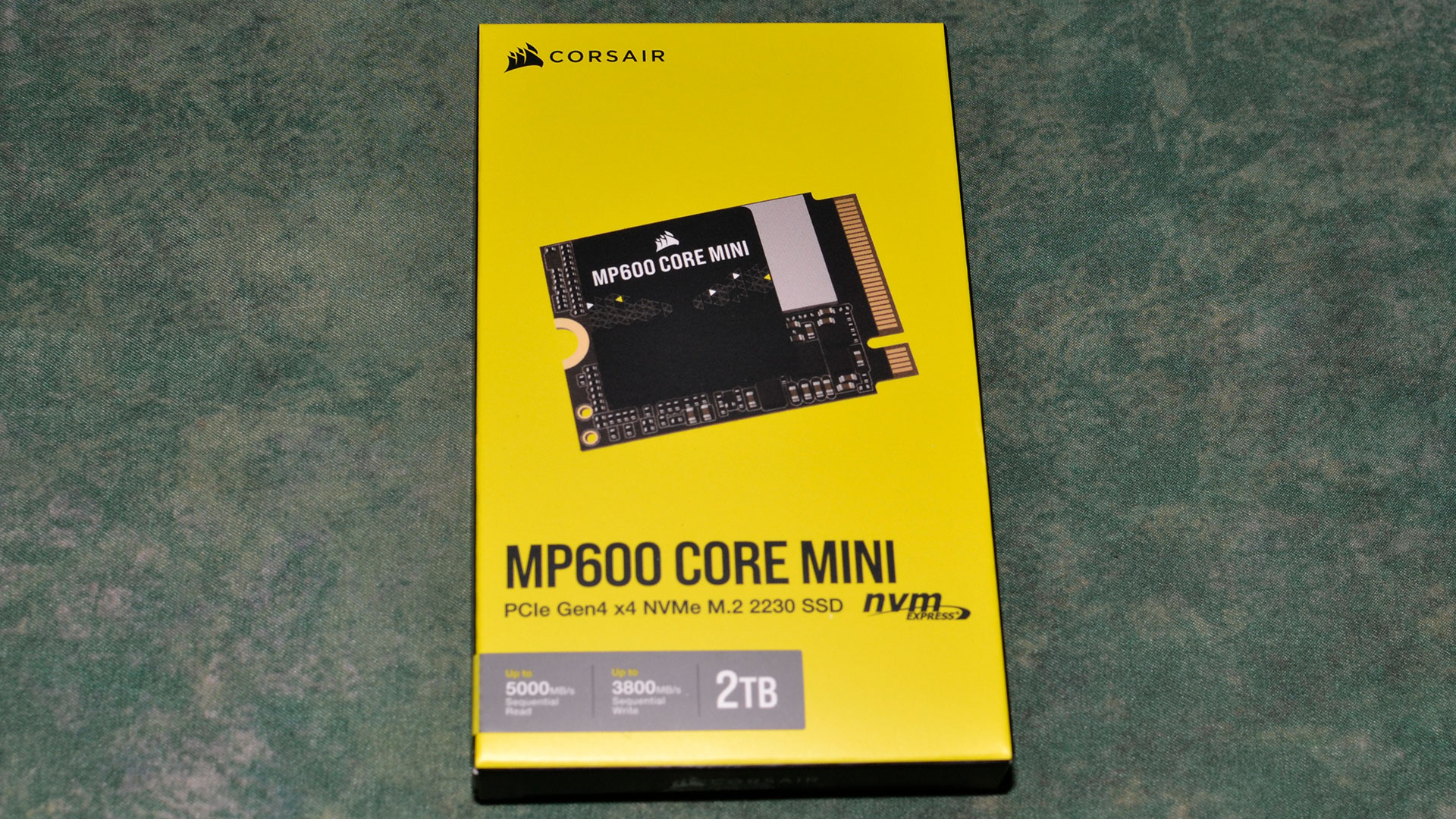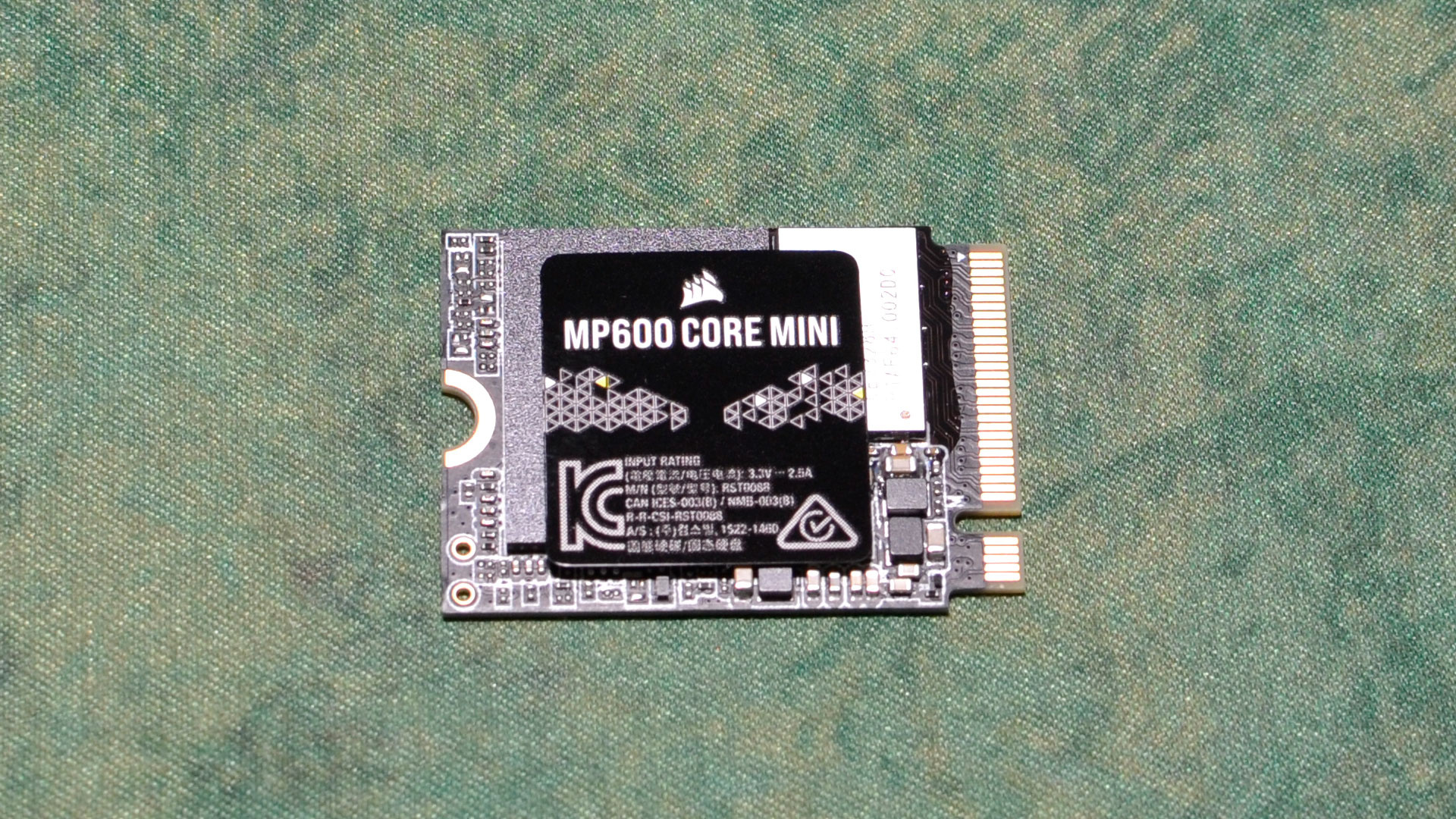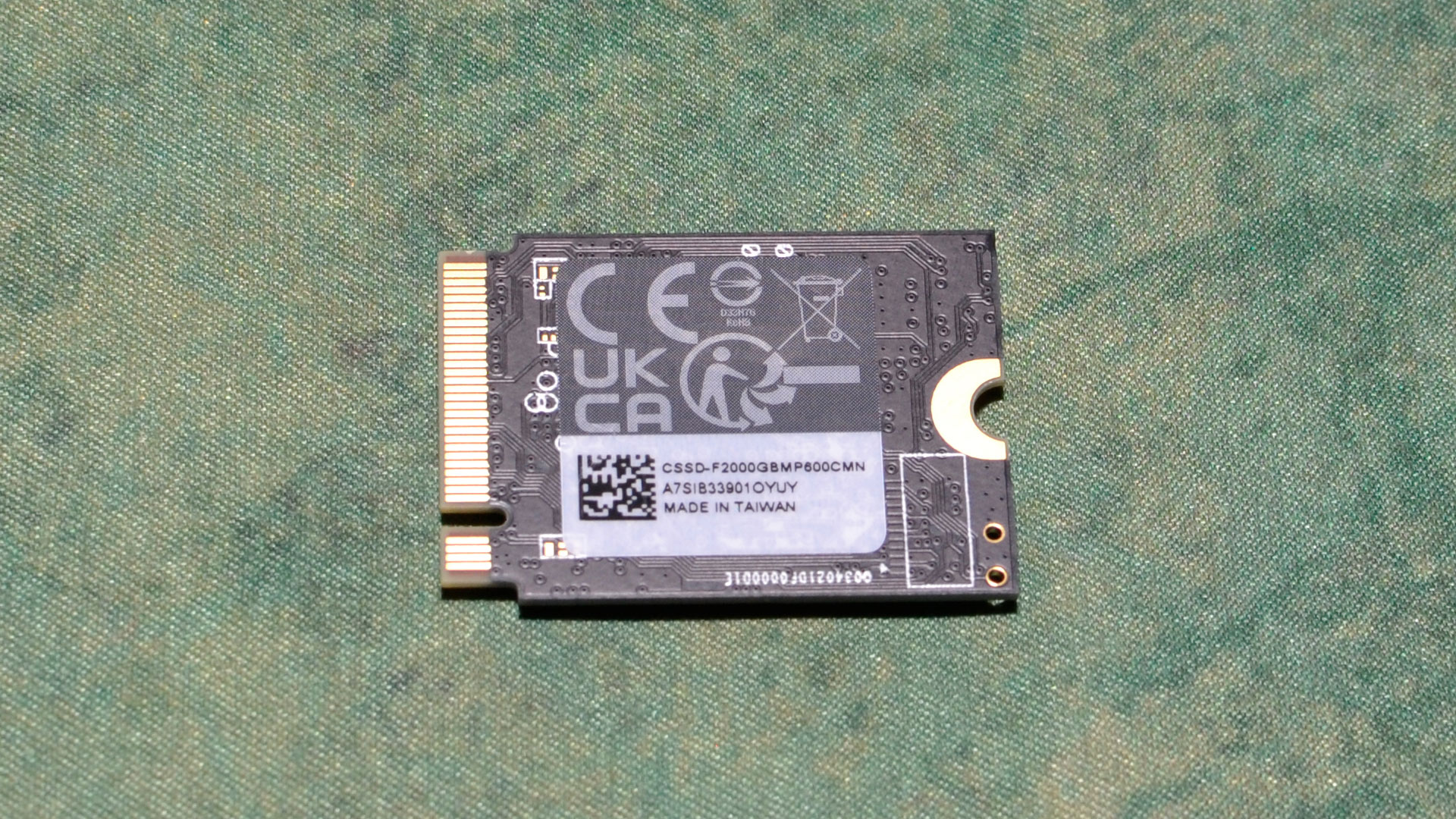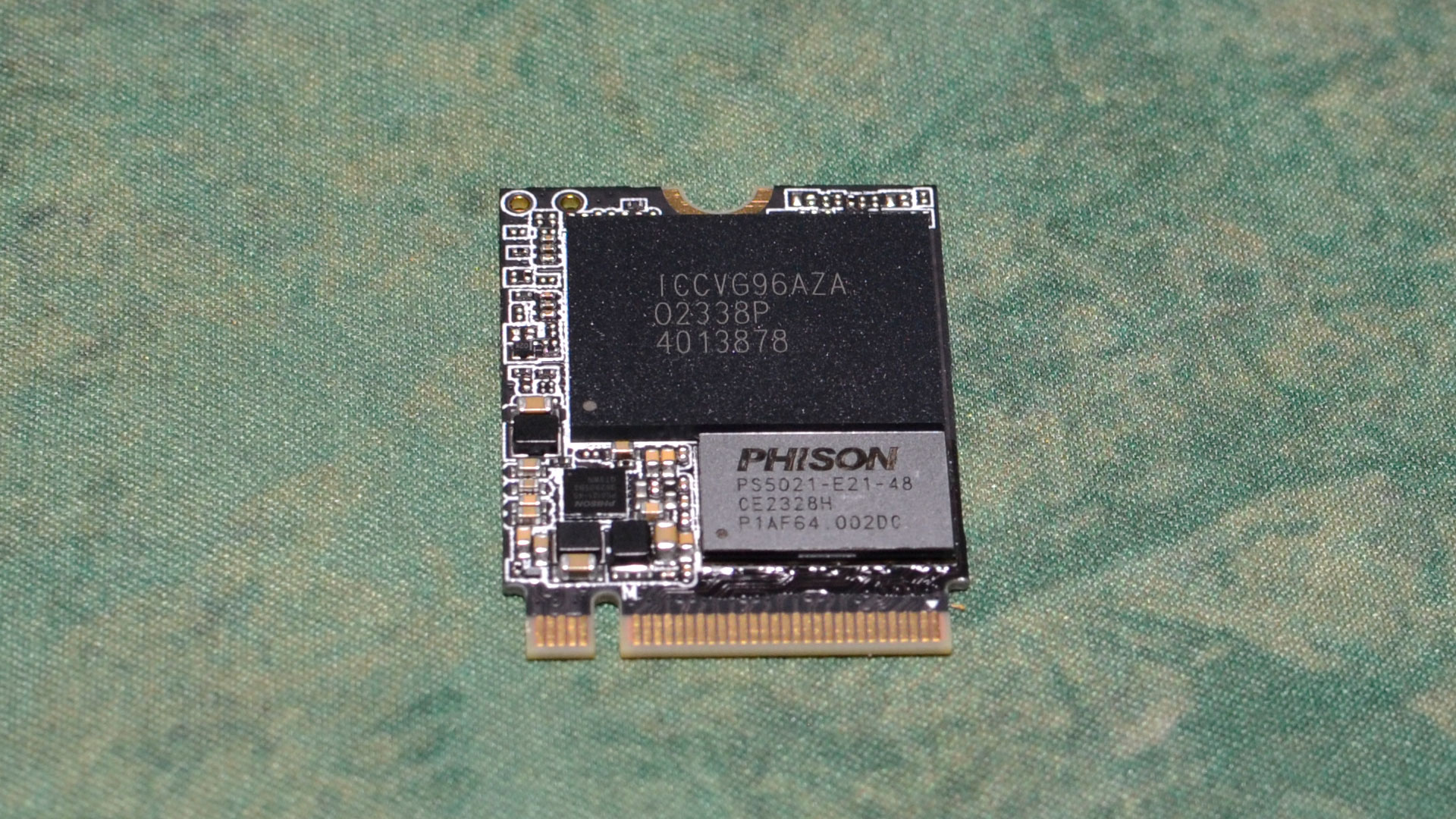Tom’s Hardware Verdict
The Corsair MP600 Core Mini is a good counterpart to the original MP600 Mini, utilizing QLC instead of TLC to reach up to 2TB in the M.2 2230 form factor. Performance is good enough, but less impressive in sustained and PCIe 4.0 modes.
Up to 2TB in M.2 2230

Good performance for PCIe 3.0 and the Deck
Uses QLC NAND flash
Lower PCIe 4.0 and sustained performance
Why you can trust Tom’s HardwareOur expert reviewers spend hours testing and comparing products and services so you can choose the best for you.Find out more about how we test.

Features and Specifications
Never has it been so easy to fit so much storage into such a small form factor. The proliferation of amazingly convenient mobile PC gaming platforms has opened the retail market to diminutive but capacious M.2 2230 SSDs, like the Corsair MP600 Core Mini. Corsair already stunned with the 1TB TLC-based MP600 Mini, but the Core Mini ups the ante on capacity to an expansive 2TB. It’s efficient, it’s relatively fast, and it’s the perfect upgrade to your Steam Deck or Deck OLED to help you fit just a few more games. All under the Corsair name.
This drive is great for your Asus ROG Ally, too, and will work on many other platforms as-is or with the help of an extender. If you’re a Lenovo Legion Go owner and don’t want to deal with that, Corsair has the M.2 2242 MP600 Micro on the way. You can opt for 2TB of TLC with theWDBlack SN770M instead, but at least for the Deck you will be more than satisfied with “just” the Core Mini. It’s another QLC option that simply gets the job done. It’s only a matter of waiting for the right time to strike in terms of price.

The Core Mini is available at 1TB, too, but there’s more competition at that capacity. We also expect more competition at 2TB - from both TLC and QLC drives - in the mid- to long-term future. Technology marches on. Additionally, base units of the Deck and Ally also come with 512GB or larger internal drives, which makes an upgrade a harder sell. But if you really want 2TB this can be a great way to go, and your old drive won’t go to waste with just a dash of effort.
While the MP600 Core Mini brings nothing new to the table, it secures a reliable alternative much like the MP600 Mini did on its arrival. The MP600 Micro will secure the spot for the M.2 2242 form factor, and we’ll cover that interesting case in due time. Now onto the review.

Specifications
The Corsair MP600 Core Mini is available at 1TB and 2TB at $94.99 and $199.99, respectively. These current prices are higher than the competition at one or both capacities. Alternative drives with QLC include theSabrent Rocket Q4 2230, theAddlink S91, theSilicon Power UD90 2230, theTeamgroup MP44S, and theInland QN446. The MP600 Core Mini is, however, less expensive than the TLC-based2TB WD Black SN770M. At 1TB you can get TLC at the same price or less, though, which includes Corsair’sMP600 Mini. No doubt the MP600 Core Mini will eventually be on sale for less than its current price.
The drive can reach up to 5,000 / 3,800 MB/s for sequential reads and writes as well as up to 650K IOPS for random reads and more for random writes. Corsair warranties the drive for 250TB and 450TB of writes, at 1TB and 2TB respectively, which matches the QLC competition exactly. The SN770M, using TLC instead, reaches 600TB of writes per TB capacity in comparison. However, the QLC on the MP600 Core Mini is internally rated for at least 1000 program/erase cycles. If you somehow write enough to wear out the flash, the drive is also capable of going into a failsafe read-only mode.

Software and Accessories
Corsair offers a downloadable SSD toolbox with all of the typical features. This application shows system and drive information as well as your drive’s SMART status. Possible operations include changing the level of overprovisioning, optimizing the drive with TRIM, cloning the drive, and secure erasing the drive.
A Closer Look
The MP600 Core Mini satisfies the M.2 2230 form factor requirements and is single-sided for maximum device compatibility. While 2TB seemed mostly out of reach when the Steam Decklaunched, things have changed. In fact, the Steam Deck has been updated with anOLEDversion which natively comes with a 512GB or 1TB internal SSD. The other primary 2230 system, theAsus ROG Ally, also comes with a 512GB drive. This puts more pressure on manufacturers to deliver a 2TB drive to make upgrades worthwhile, hence Corsair’s new model.
While the Deck is restricted to PCIe 3.0 speeds - which is not a huge concern - the ROG Ally and other similar systems support 4.0. Newer drives are more efficient so there’s no reason to go with an older 2230 solution. That’s not the only problem, though. There are other devices like theLenovo Legion Gothat require an intermediate-length M.2 2242 SSD. It’s possible to use an M.2 extender on a 2230 drive, an older 2242 drive like the Sabrent Rocket 2242 as double-sided drives fit, or a native 2242 solution. The final case has been challenging for retail, but Corsair has its 2242 form factor MP600 Micro on the way.
The 2TB MP600 Core Mini has an SSD controller, a single NAND flash package, and no DRAM. This makes for a very compact solution. Performance does not increase at 2TB over 1TB and, in fact, the rating for random read IOPS is lower. This is also true of theAddlink S91. This has no real impact on drive performance but reflects the diminishing returns with QLC as the 1TB 2230 TLC drives, such as theSabrent Rocket 2230, can eke out more with sixteen dies.
In both cases, the use of a single package (HDP) is addressed with only an eight chips enable (CE) count. A chip enable signal lets the flash controller switch between dies for active operations while the other die in the pair is otherwise engaged. The Phison E21T SSD controller can manage up to fourCEsfor each of its four flash channels, for a total of sixteen, but this configuration is more common with multiple packages due to the flash layout. It would be possible to use the full sixteen with 1TB or 2TB of Micron’s 176-Layer TLC, for example, with the potential for higher peak random read IOPS, but the MP600 Core Mini’s configuration makes more sense for its application.
MORE:Best External SSDs and Hard Drives
MORE:How We Test HDDs And SSDs
MORE:All SSD Content
Current page:Features and Specifications
Shane Downing is a Freelance Reviewer for Tom’s Hardware US, covering consumer storage hardware.